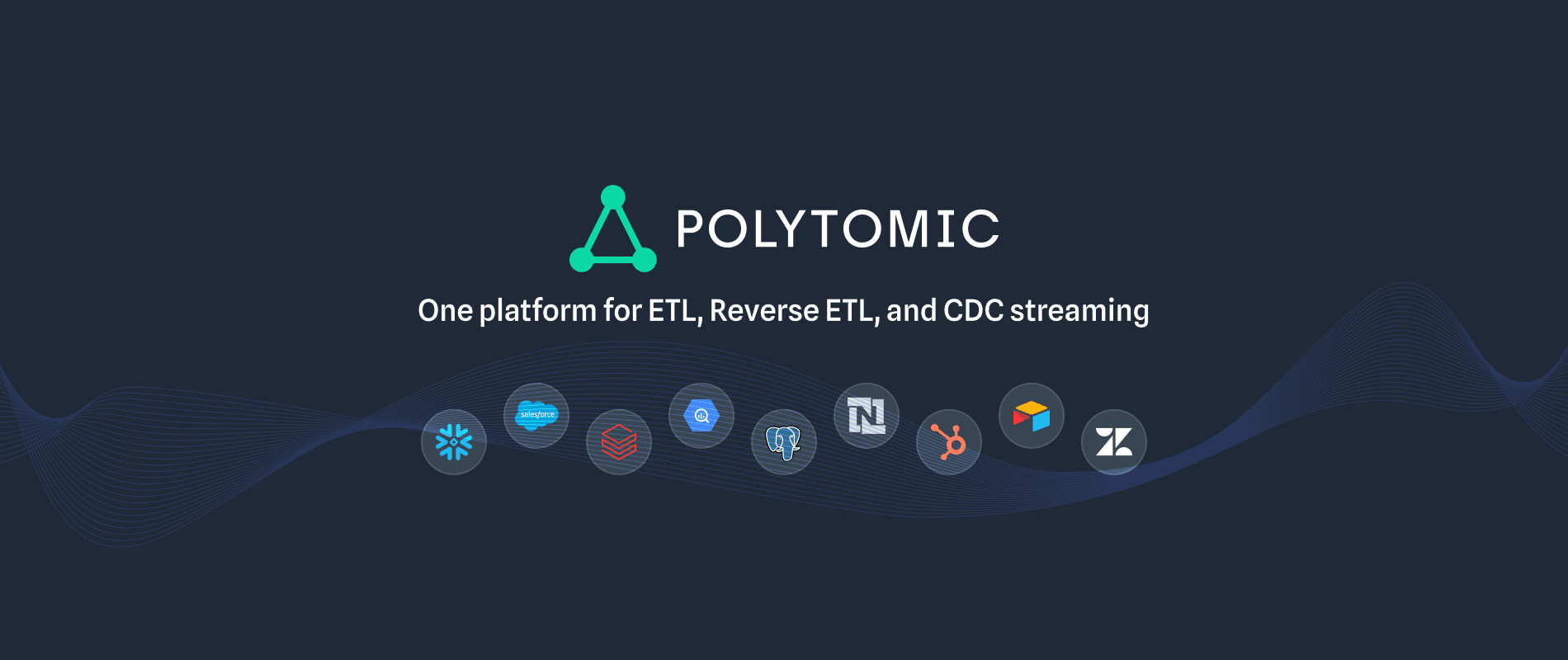
Stitch Data vs Airbyte For ETL/ELT in 2025
Stitch Data is a cloud-based ETL service that moves data from over 140 sources to a data warehouse with minimal IT expertise, while Airbyte is an open-source engine designed to consolidate data in data warehouses, lakes, and databases. In this article, we'll compare Stitch Data and Airbyte to see which one is the best ETL solution.
What are Stitch Data and Airbyte?

Stitch Data
Stitch Data is a cloud-based ETL service that allows users to move data from over 140 sources to a data warehouse with minimal IT expertise.
In 2018, legacy data provider Qlik acquired the company and integrated Stitch Data with Talend.

Airbyte
Airbyte is an open-source ETL engine designed to consolidate data in data warehouses, lakes, and databases.
It offers a range of solutions including Airbyte Cloud for quick setup, Airbyte Self-Managed Enterprise for secure data movement, and Airbyte Open Source, which is used by over 40,000 companies.
Compare Stitch Data and Airbyte

Stitch Data

Airbyte
Key Features
- Transfer data from sources to warehouses (ETL)
- No coding necessary
- SOC2 compliant
Key Features
- Transfer data from various systems to data warehouses (ETL)
- Extensive range of built-in connectors
- Self-service capabilities
- Thriving open-source community
Limitations
- Encountering bugs and instability when scaling up
- Delayed updates to changes in connector APIs
- Absence of Reverse ETL functionality
- Limited growth in support for new connectors
Limitations
- Many connectors are only “community-supported”
- Setup process is complex
- Can be brittle and immature at scale
- Cannot move data from warehouses to SaaS apps (No Reverse ETL)
Pricing
Stitch Data provides three primary pricing plans: the Standard Plan, which begins at $100 per month, the Advanced Plan, priced at $1,250 per month when billed annually, and the Premium Plan, costing $2,500 per month with annual billing.
Each plan is tailored to meet varying user requirements and data capacities, with features that scale to match the needs of different users.
Pricing
Airbyte provides diverse pricing options, including a free Open Source plan for self-hosting, a volume-based Cloud plan, and capacity-based Team and Enterprise plans.
Each plan differs in hosting, sync frequency, and features, with the Cloud plan charging extra for frequent syncs and the Team and Enterprise plans offering various add-ons.
Reviews
Using Stitch Data has a rating of 4.4 out of 5 stars. Users have reported concerns about the reliability of the product and the quality of customer support.
Previous Stitch Data customers cite minimal new work on existing connectors, slow response times to outages, and unwillingness to build new connectors. Check out more of their reviews here.
Reviews
Airbyte has a rating of 4.5 out of 5 stars, but users have reported issues with error reporting and poor documentation. There are also mentions of limited integrations and challenges with certain connectors, such as Google Sheets. Check out more of their reviews here.
Troubleshooting can be frustrating, especially for open-source users, and there are concerns about security when allowing Airbyte IPs to access databases. Polytomic customers that previously used Airbyte cite unreliability as they scale to millions of rows per month.
Why customers are switching to Polytomic
Polytomic combines ETL, Reverse ETL, and CDC streaming in a single platform so you can move data to and from your data warehouse without managing multiple ETL tools.
- Loved by Data Teams: One single vendor for all ETL and Reverse ETL, covering high-scale CDC streaming, full SQL support, and Terraform integration.
- Easy for RevOps and Marketing: Point-and-click pipelines with power-user features like real-time SOQL transformations on Salesforce and native integrations with ad platforms.
- Integrations Powering AI Agents: White-label API with native clients for unified ETL; deep integrations with your customers’ GTM stack, finance tools, and data warehouses with fully managed authentication.
- Enterprise-ready: Self-hosting option, multi-tenant workspaces, fine-grained RBAC permissions, high scalability, and 30–50% cost savings from platform consolidation. Plus, support from engineers—in minutes, not days.
What is Polytomic?
Polytomic
Data teams appreciate our single ETL platform with unified monitoring to centralize all data movement. We have full SQL support and first-class support for infrastructure-as-code.
RevOps and marketing teams use our no-code UI to quickly and independently set up syncs for product data to their CRM and ad platforms.
Built for enterprise scale, Polytomic can be self-hosted, handles billions of rows reliably, and has multi-tenant workspaces with fine-grained access controls.
















All the features you need, on the platform that does it all
Replace multiple vendors
Reduce costs and simplify workflows
One platform for all syncs
ETL, Reverse ETL, CDC, iPaaS, APIs, and spreadsheets
Sync only what's changed
Save on API limits and compute costs
Point and click
Select and filter your data without writing code
SQL query support
Powerful transformations when you need them
Pull from any API
No more glue code for custom integrations
Self-hosting available
Turnkey deployment to your private cloud
Enterprise-ready
SOC 2, GDPR, permissions, and audit logs
Integrated with your favorite tools
Sync any of your proprietary data from databases, data warehouses, and spreadsheets to the business systems you use.








Pricing begins at $500/month
Standard
Everything in Basic, plus:
- Sync to and from databases, warehouses, spreadsheets, apps, and APIs
- Unlimited users and connections
- Multiple sync destinations
- Live chat support with engineers
Enterprise
Everything in Standard, plus:
- On-prem deployment
- Single sign-on (SSO)
- Dedicated engineer
- Phone support
Get hands-on with Polytomic
See how easy it is to sync data to the tools your team actually uses—no code, no waiting.
